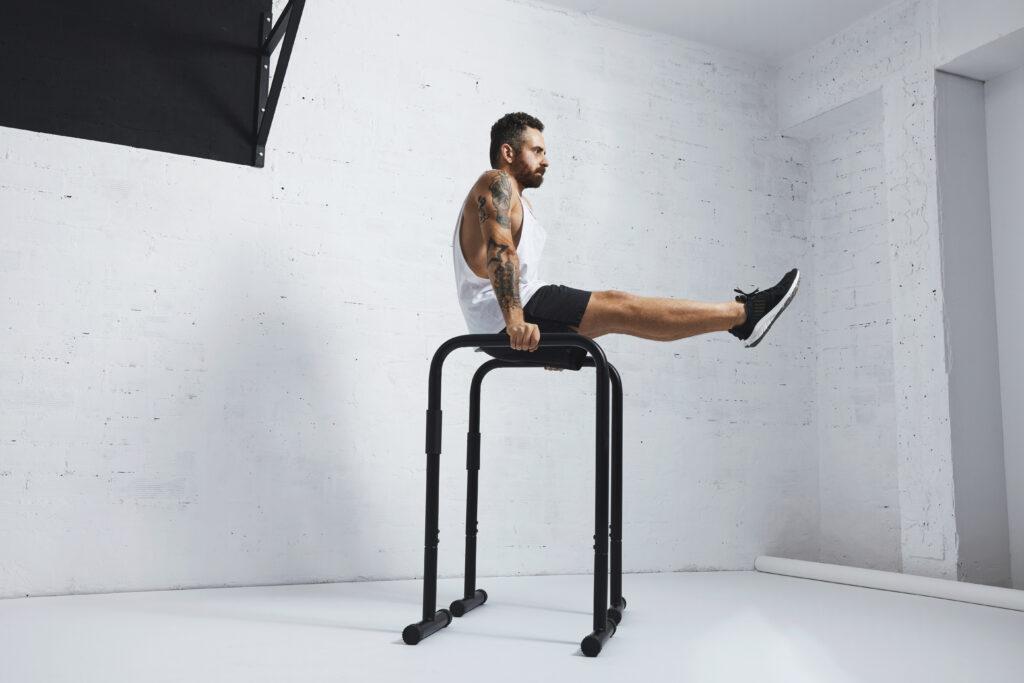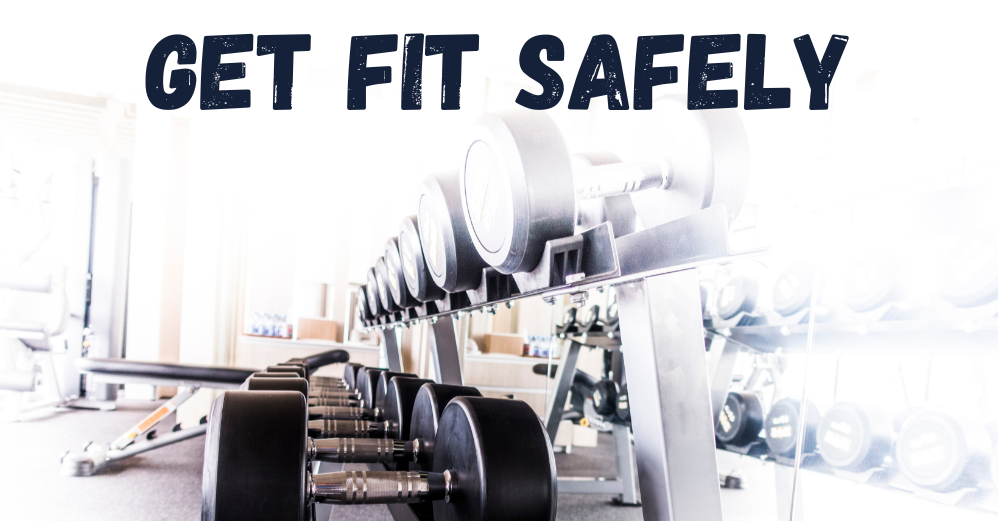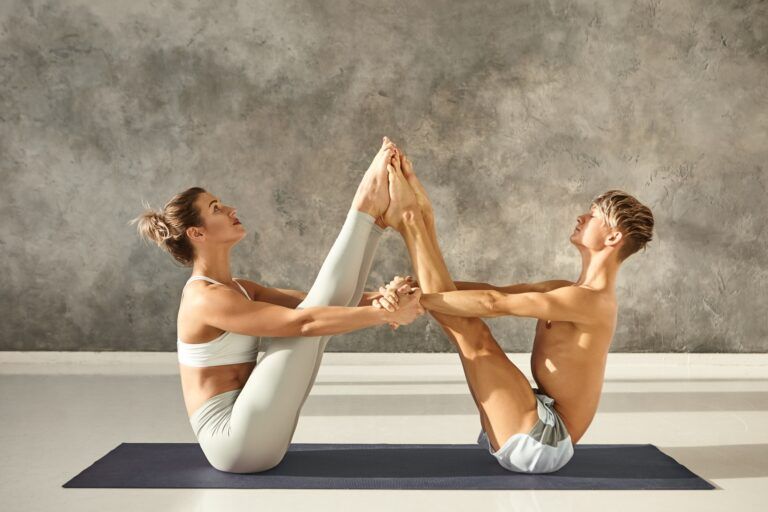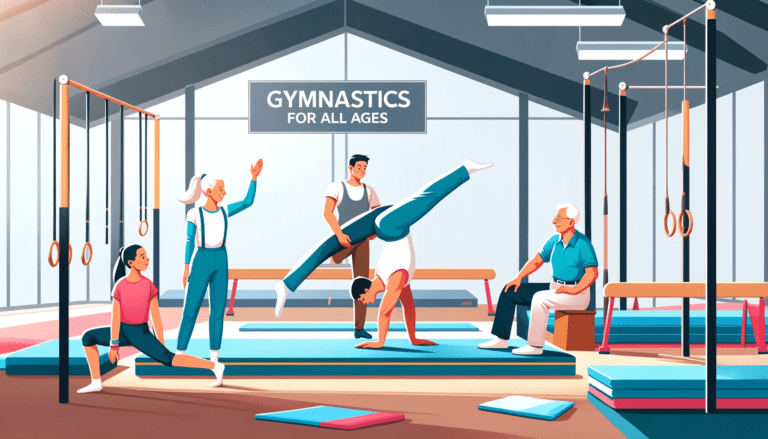Bodyweight exercises have been a constant in my fitness journey.
They’ve always intrigued me because they demand every ounce of your body weight, making you feel truly connected to your strength.
But let’s be honest, something is fascinating about the clinking of weights in a gym, the ability to choose your resistance – it’s empowering.
In my two decades of fitness experience,
I’ve discovered that bodyweight training is like a hidden gem.
It’s fantastic for boosting both strength and endurance.
However, if you’re chasing that sculpted, muscle-bound physique, the path inevitably leads to weight training.
I’ve witnessed even seasoned athletes struggle with certain bodyweight exercises, realizing that complexity knows no bounds.
The real challenge often emerges when you seek progress within these exercises.
And how do you progress, you ask? Well, there are two paths:
- You can add weights, but there’s a limit to how many plates you can stack.
- Or, you can venture into the realm of more challenging variations.
Let’s talk about those advanced versions – the ones that push your limits.
Single-leg squats and One-Arm Push-Ups, for example, aren’t for the faint of heart.
They’re the secret sauce for fostering massive muscle growth.
So, which path will you choose in your fitness journey?
Let’s dive in and explore the possibilities together.
The Power of Weightless TrainingWeightless training, or as we commonly call it, bodyweight training, stands as a unique fitness approach that defies convention. It’s a system meticulously crafted to bolster strength and muscle mass without the crutch of typical gym equipment like kettlebells, barbells, or dumbbells. In weightless training, your own body becomes the ultimate resistance, leading to workouts that are not just invigorating but immensely rewarding. What’s remarkable about these exercises is their adaptability. By making subtle variations, you can continually push your limits and progressively build greater strength. The beauty of bodyweight exercises lies in their authenticity, mimicking natural movements that tap into the elastic and reactive forces within your body. This, in turn, nurtures muscle flexibility and promotes joint health. But hold on, we’re just scratching the surface here. Let’s dive deeper into the myriad benefits of bodyweight training. |
1. Development of balance and coordination

Engaging in bodyweight exercises is a great way to get your body in sync.
You’ll improve your balance, coordination, and focus.
Make these exercises a regular habit, and you’ll see your muscles working better and responding faster.
Mastering balance isn’t just about agility.
It’s about your body being ready to catch you when you stumble or slip.
Keep at it, and you’ll feel the difference in everyday moments.
2. Easy on Your Joints & Safe
Let’s talk about keeping those joints happy and healthy!
Free body training?
It’s like your joints’ best friend.
Forget about the heavy effort you feel when lifting weights.
Here, our goal is an effective workout that’s super kind to your joints.
Think of it as a gentle hug for your muscles and bones.
Each exercise is a smooth move that brings together multiple muscle groups without stressing the joints.
So, Bodyweight training is the way to go for a workout that is not only great for your muscles but is also a safe bet for long-term joint health.
Easy, effective, and safe!
3. Enhancing Muscular and Cardiovascular Endurance
As we delve deeper into the world of bodyweight training, let me share a personal observation.
These workouts resemble an art form, requiring a harmonious effort from every part of your body.
Take the plank, for instance – it’s a challenging exercise that engages your abdomen, arms, pectorals, back muscles, and buttocks in a unified effort.
Regular physical activity not only challenges your muscles but also gifts you with improved lung capacity.
Your muscles become more efficient, demanding less oxygen and producing less carbon dioxide.
It’s like your lungs learn to breathe smarter, inhaling and exhaling less air during your workouts.
Beyond the physiological benefits, let me assure you that bodyweight training is a love letter to your cardiovascular system.
It nurtures your heart, invigorates circulation, and acts as a shield against heart disease and stroke.
4. Unlocking Greater Strength
Now, let’s talk strength – a topic close to my heart.
Bodyweight training serves as a sturdy foundation for those, including myself, who want to build a robust base of muscle strength.
It’s the initial step in a journey toward more advanced training styles.
As someone who’s walked this path exercises like Push-Ups, Chin-Ups, and Dips hold a special place in my fitness repertoire.
They not only build strength but also enhance stability and motor coordination.
5. Freedom and Flexibility
One of the things I truly cherish about bodyweight training is the freedom it offers.
It’s an open invitation to train wherever your heart desires – be it at a serene park near your home, or even right in your living room, perhaps in front of the television.
But what resonates with me is the cost-saving aspect.
You see, with bodyweight exercises, there’s no need for expensive gym memberships or bulky equipment cluttering your space.
It’s simplicity at its finest.
All it takes is a bit of creativity, some practice, and a heightened sense of your own body.
Now, when you’re working out at home, it’s a bit like embarking on a solo adventure.
It’s a personal commitment that can be incredibly rewarding.
6. Sculpting Muscles and Amplifying Functional Muscle Mass

An intriguing article from Men’s Health titled “30 Bodyweight Exercises” unveils a fascinating fact – science tells us that bodyweight exercises when executed through their full range of motion, can be just as effective as lifting weights.
It’s almost magical how push-ups, for instance, can rival the power of Bench Presses when it comes to boosting strength.
Research published in Physiology & Behavior, titled “The acute and chronic effects of ‘NO LOAD’ resistance training” confirms that muscle growth isn’t always tethered to external weights.
Now, here’s where things get interesting.
Seasoned trainers often speak of a caveat – bodyweight training may indeed promote muscle mass gain, but it does have its limits…
You see, most bodyweight exercises engage multiple muscle areas simultaneously.
This makes it a bit tricky to isolate and target individual muscles during your training sessions.
However, here’s the key takeaway: if you’re working with lighter versions of bodyweight workouts, don’t expect bulging biceps.
But, and this is the exciting part, when you embrace the more challenging variations, the ones that push your limits, you’re on the path to significant muscle growth.
| In bodyweight exercises, there’s a captivating phenomenon at play – the magic of Closed Kinetic Chain (CKC) movements.
These are movements where an extremity, be it a hand or foot, maintains contact with a surface, like a wall or a floor. Now, what makes CKC exercises truly intriguing is their interconnectedness. Engaging in one kinetic chain triggers a chain reaction, bringing multiple areas of your body into harmonious action simultaneously. As you navigate through CKC exercises, you’ll discover a delightful challenge. They require you to engage a comprehensive array of muscles to perform each movement accurately and effectively. The result? More muscle groups come to life in a single motion, generating increased force. Here’s the bonus: this heightened activity translates into a robust hormonal response throughout your entire body. In essence, CKC exercises are your golden ticket to achieving remarkable muscle-building results in less time. Now, let’s briefly compare this to weight training, which typically follows an Open Kinetic Chain (OKC) movement. In the OKC scenario, limbs move while the torso remains fixed. For instance, consider the difference between pull-ups and the lat machine. In the lat machine, stabilizing muscles, like the core, have a more passive role. However, it does allow for the isolation of specific muscle groups, such as the back muscles. Nevertheless, it’s worth noting that the weight you can move during OKC exercises often falls short of the resistance encountered in bodyweight exercises like pull-ups. |
7. Boosting Calorie Burn
Now, let’s talk about a topic that’s music to many ears – calorie expenditure.
Every muscle-strengthening exercise you perform amps up your basal metabolic rate, resulting in more calories burned even when you’re at rest.
What’s truly exciting about bodyweight training is its efficiency in calorie-torching.
When you engage multiple muscle groups in one workout, you’re in for a calorie-burning extravaganza that doesn’t demand hours of your time.
As you dive into bodyweight training, you’ll witness a transformation – body fat takes a back seat, and your muscles emerge with a newfound tone that’s hard to ignore.
If you’re in pursuit of maximizing calorie burn, consider stepping up the intensity.
High-Intensity Interval Training (HIIT) or circuit workouts are fantastic choices.
They take your calorie-burning game to a whole new level.
8. Elevating Spatial Awareness and Body Control
Let’s explore a less discussed but equally crucial aspect – spatial awareness and body control.
Through bodyweight training, you embark on a journey where you not only master your body but also gain control over external objects in free space, defying the force of gravity.
With each bodyweight movement, you’ll become more attuned to every muscle in your body.
This unique activity fosters heightened mobility while keeping stabilizing muscles in a constant state of engagement
9. Enhancing Mental Well-being
As you challenge your body through regular workouts, you’re in for a remarkable transformation that extends beyond the physical realm.
The strain you put on your body leads to a boost in self-esteem and fosters a profound sense of neurological and psychological well-being.
It’s not just words; countless athletes and fitness enthusiasts attest to the mental benefits:
- Anxiety dissipates.
- Stress finds an exit.
- The weight of depression lifts.
If you’ve ever engaged in consistent physical activity, you’ll likely recognize that state of well-being induced by movement.
It’s a testament to the incredible power of exercise.
Why Bodyweight Exercises Leave You More Tired
Here’s a question that often perplexes many: why do bodyweight exercises leave you feeling more tired compared to weight training?
My quest for answers led me to an insightful discussion on the Reddit Forum (Reddit discussion on r/bodyweightfitness). Among the responses, one from user shadowheart1 stood out:
“Some experts speculate that the amount of fatigue is greater in bodyweight exercises because they require the use of many stabilizing muscles compared to other disciplines.
Additionally, bodyweight exercises involve a wider range of motion than typical gym equipment.”
In essence, bodyweight exercises demand more from your body.
They challenge your balance, engage various muscle groups, and create continuous tension in stabilizing muscles.
This synergy results in a heightened feeling of fatigue compared to traditional weightlifting.
In conclusion, bodyweight exercises not only build physical strength but also have a profound impact on mental well-being, and their unique demands contribute to a more satisfying sense of fatigue.
The Challenge of Bodyweight Exercises vs. Weights
Now, let’s explore a question that often lingers in the minds of fitness enthusiasts:
Why are bodyweight exercises often considered more challenging than traditional weightlifting?
Let’s delve into some perspectives, drawing insights from a Quora discussion on the topic.
Forum User Tom Coffee, an online personal fitness author, presents a compelling viewpoint.
He argues that it’s not necessarily that bodyweight exercises are inherently harder, but rather a matter of approach.
In weightlifting, you have the flexibility to increase the challenge by simply adding more weight.
It’s a straightforward way to intensify your training.
However, when it comes to bodyweight exercises, this approach becomes less feasible.
You can’t conveniently stack on extra pounds during your workout. Instead, the challenge lies in altering your body’s mechanical advantage.
By doing so, you make the exercises more demanding, effectively increasing the resistance.
In essence, the perceived difficulty of bodyweight exercises stems from the need to manipulate your body’s weight and leverage, rather than merely stacking on external weights.
It’s a unique challenge that requires a different kind of mastery.
Elevating the Challenge in Bodyweight Exercises
As we dive into the art of making bodyweight exercises truly demanding, one principle stands out, echoing the wisdom of Tom Coffee and insights from the Quora.com forum – the need to “change the lever.”
Reducing leverage during bodyweight exercises becomes the key to intensifying resistance, effectively transforming seemingly basic exercises into formidable strength-building journeys.
Think of it as shifting gears on a bicycle to conquer steeper hills – it’s all about finding that perfect balance.
Of course, there are other creative ways to spice up your bodyweight workouts.
You can venture into the world of single-limb variations, such as the pistol squat or the daring one-handed Push-Up.
These variations inject finesse and challenge, keeping both your body and mind engaged.
But let’s not get lost in the technicalities for now.
Instead, let’s embrace the powerful concept of leveraging your own body in bodyweight training.
Consider these examples that vividly illustrate the point:
- The humble Push-Up transforms into the demanding realm of the Handstand Push-Up.
- The classic Pull-Up reaches new heights with exercises like the graceful L-Sit Pull-Up or the formidable Iron Cross.
- Even the unpretentious Hanging Knee Raise can evolve into the more challenging Hanging Straight Leg Raise, adding an elegant twist to your routine.
As someone who aligns with Tom Coffee’s perspective, I can’t stress enough the incredible value of these bodyweight training concepts.
They’ve not only reshaped my approach to fitness but have also injected fresh excitement and a sense of accomplishment into my workouts.
It’s a reminder that sometimes, the most effective tools for progress are the ones we carry with us every day – our bodies.
When Bodyweight Exercises Stop Creating Visible Muscle Growth
At the beginning, bodyweight exercises build strength, coordination, and muscle all at once because your body is forced to work inefficiently and recruit far more muscles than it knows how to manage.
Over time, however, your nervous system learns the movement, stabilizes better, wastes less energy, and distributes the load more evenly, which makes the exercise feel smoother and more controlled but also reduces the mechanical tension on the target muscles.
That’s why many people reach a point where they feel stronger and more skilled while their physique stops changing in the mirror.
As reps increase, bodyweight work often shifts toward endurance rather than hypertrophy, unless something meaningful changes in leverage, range of motion, tempo, or external load.
This is the moment when random “harder exercises” stop being enough and structured progressions become essential, because without a clear increase in stimulus, muscle growth has no reason to continue.
For a deeper explanation of how to progress past this plateau, the Calisthenics Progression Guide breaks down exactly how to do it.
Skill Progression vs Muscle Progression in Bodyweight Training
One of the biggest misunderstandings in bodyweight training is assuming that improving a movement automatically means building more muscle.
In reality, a large part of early progress comes from neurological and technical adaptations such as better balance, cleaner timing, improved bracing, and more efficient leverage.
Exercises like pistol squats or one-arm push-ups often improve quickly because the body learns how to organize itself better, not necessarily because the muscles involved have grown significantly.
Small changes in joint angles or body positioning can dramatically reduce difficulty, creating the sensation of strength gains without a corresponding increase in muscular tension.
If the goal is visible muscle development, the key question is whether the target muscle is being exposed to progressively higher tension over time, rather than simply performing the movement more cleanly.
Without intentional overload, progress may remain mostly technical while muscle size stays the same.
Final Thoughts
In weightlifting, the main challenge is simple: add more weight to the bar, following a linear and straightforward path.
However, my experience has opened my eyes to bodyweight training.
Here, the real magic lies in the play of leverage.
When you reduce the lever, you make exercises more demanding, creating a sort of symphony of movements where every muscle must collaborate.
Bodyweight training is not just about accumulating weight.
It’s a fascinating journey that transforms seemingly simple exercises into epic challenges.
It’s a story of mastery, where the weight you lift is not just a number in kilograms but is reflected in the precision of your control, the fluidity of your balance, and the beauty of your strength.
I have found this fitness journey incredibly rewarding, and I hope it can be the same for you.
Let me know in the comments!





